
Sometimes in this game, you get gigs that really have you wondering, “Why am I here?” It’s only happened to me a few times, but the recent Mission Foods/S&S Cycle/Indian Challenger test certainly qualifies. This is, by far, the most manly, over-the-top racebike I’ve ever sat on. It might be maroon red and gold, but the Indian Challenger Racer may as well be painted red, white, and blue. This is the two-wheeled NASCAR. Nowhere else could a race series like this happen, and I’ve been entrusted to Tyler O’Hara’s booming bagger for a few laps of the tight and twisty Chuckwalla Valley Raceway in the Californian desert.
Do. Not. Crash it.
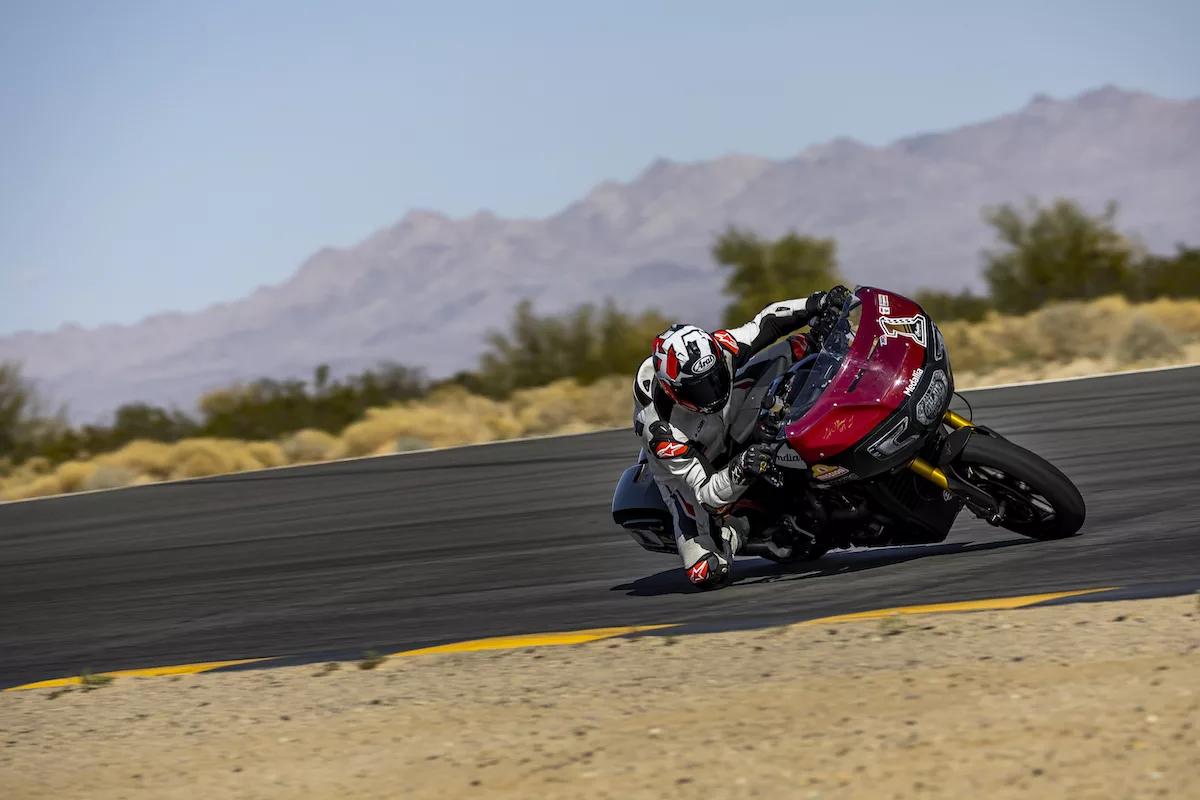
To ride such a bike, let alone go fast on it, is like juggling with one eye shut and one hand tied behind your back. Its sheer mass means it reacts so differently to anything I can draw a comparison on, from hammering the Brembo four-piston billet race calipers and 19×19 Galespeed master cylinder under brakes to wrenching the throttle and experiencing a motor that’s doing its best impression of a big-bore V8 muscle car.
O’Hara calls riding his racer “a dance”, and perhaps there’s been no better explanation of motorcycle racing as a whole. Let’s start with the chassis. Controlling flex has been one of the main talking points in motorcycle racing chassis design for the past 15 years, but it’s rare you get to do it in real time.
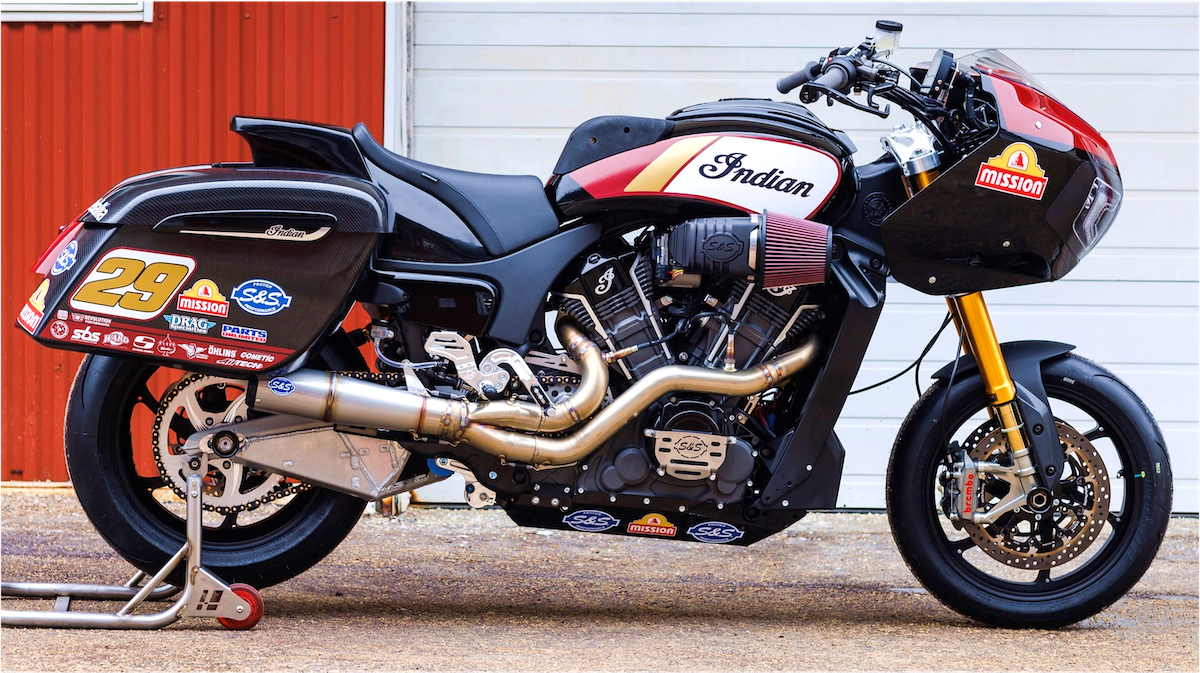
Get on the throttle and instantly the Indian Challenger Racer begins to tie itself in knots: the wiggle from the front shimmies its way through the frame and into the rear tire, which then sends the squirminess back the other way in a strange, wet noodle dance. Your job as the rider is to be as smooth and as quick as possible on picking up the ride-by-wire throttle and to use O’Hara’s thumb rear brake in unison with the rapidly building acceleration to keep the chassis on your intended line of travel, like a conductor building the orchestra’s crescendo.
That crescendo takes its form in the twin-cylinder’s 110mm wide pistons thumping up and down and delivering a thrust that is one part car, one part bike, and as American as all hell. There’s so much torque on tap, but the Indian will power on right up to the 7700rpm redline and only stop when that rev limiter is hit.
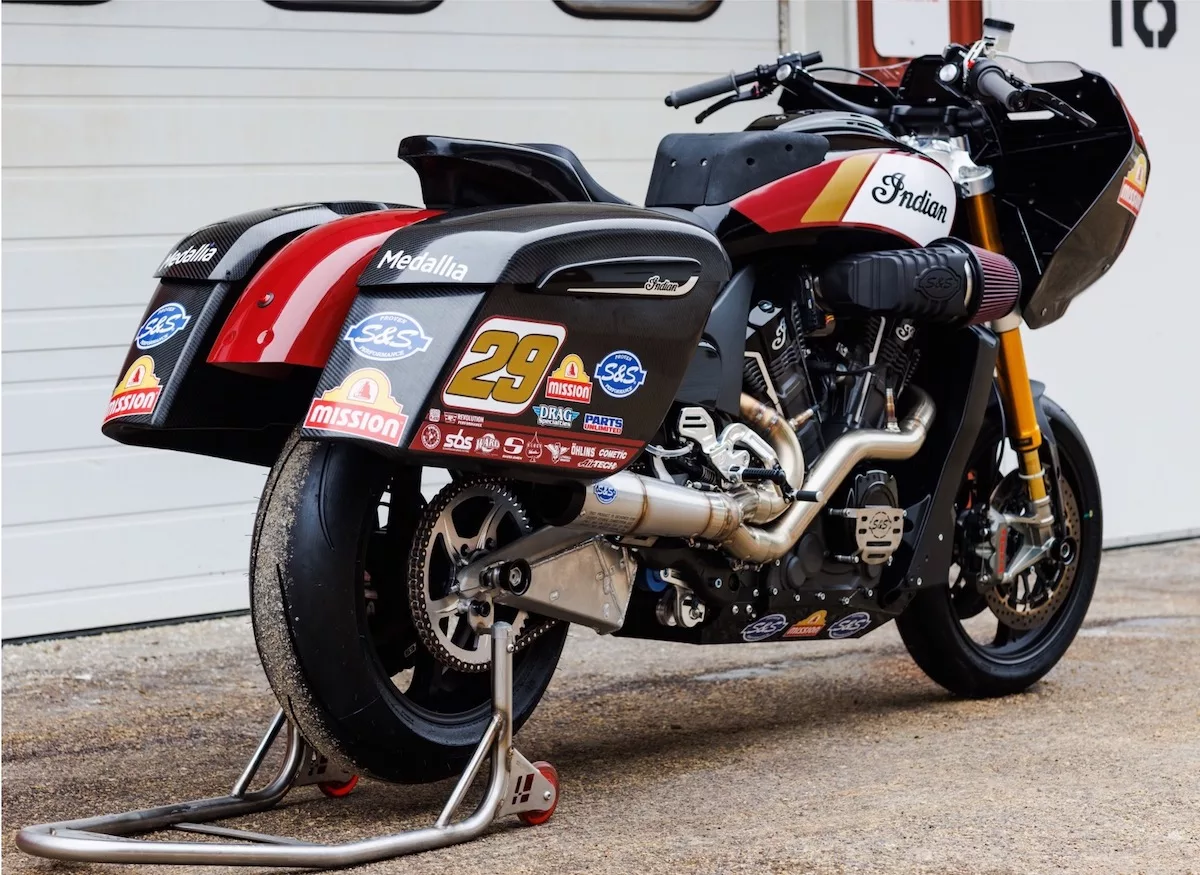
Accompanied by an intake roar that must be heard to be appreciated, the 600-plus pound Indian Challenger Racer bagger charges out of the corner in a heavyweight boxer kind of fashion. Speed and size are aligned with agility and grace as you click up through the quick shifter equipped five-speed gearbox, with O’Hara’s preferred 48mm Ohlins fork modified from a 2018 Ducati Multistrada 1260 Pikes Peak ready for the mass of weight coming when the next braking zone is encountered.
It’s here one of the quirks of the chassis begins to appear. Although immensely stable thanks to its long wheelbase and braking package that has twin superbike Brembo four-piston calipers up front and a single Haynes four-piston caliper (that should be on the front) mounted for the rear brake, trailing the front brake to the apex is a big no-no.
The front Ohlins fork will bind on the rebound stroke and make it annoyingly difficult to pull the chassis to the apex, meaning the way to a fast lap is to get the majority of your braking done in a straight line, get off the front brakes for the most part, trail the rear to the apex, and then bleed the rear brake off in conjunction with your increasing throttle intensity.
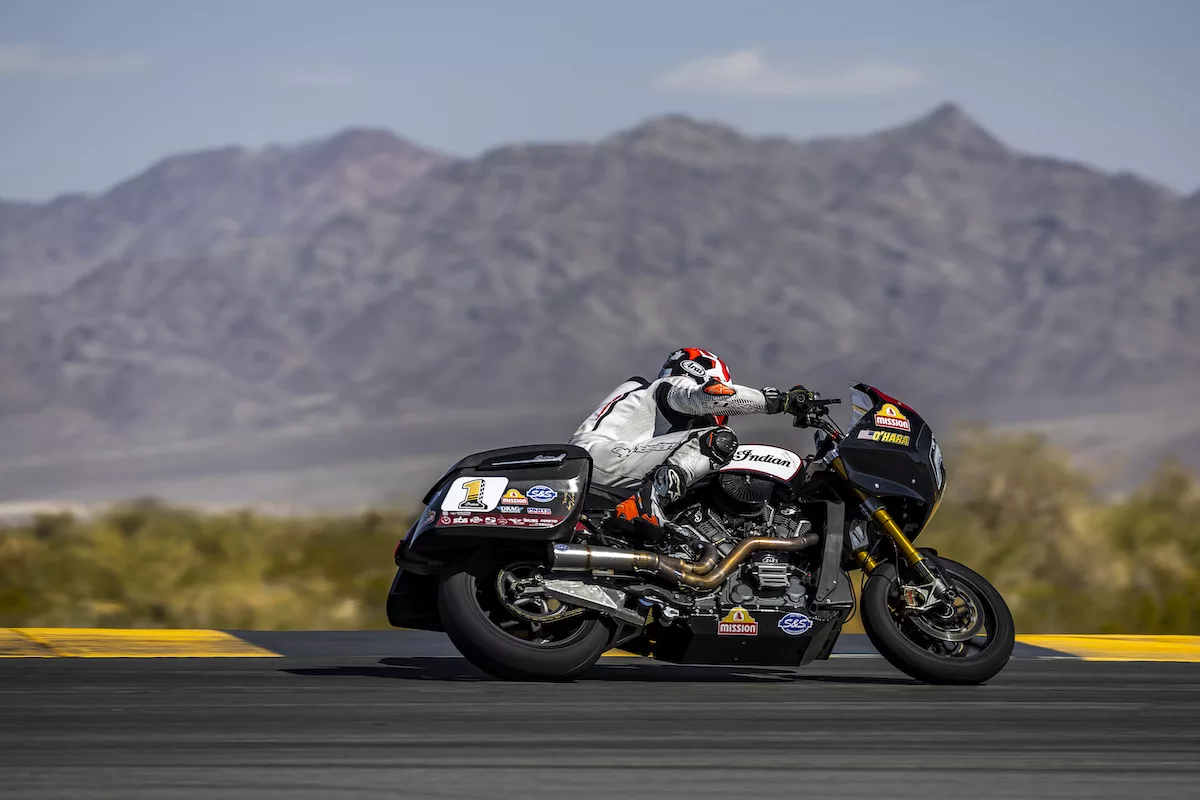
Oh, and there’s no auto-blipper on the downshift, so you must get all that done and use the clutch to change gears. Remember what I said about one hand juggling?
Five laps later, I’m exhausted not because of the riding forced, but the mental gymnastics I’ve had to do to keep O’Hara’s racer on the straight and narrow. This is what happens when you take a bike that was absolutely not designed to be a racer and make it into one. Whereas a superbike is easy as pie to get around a track, by comparison, a bagger takes real mental fortitude just to keep everything doing what it’s supposed to.
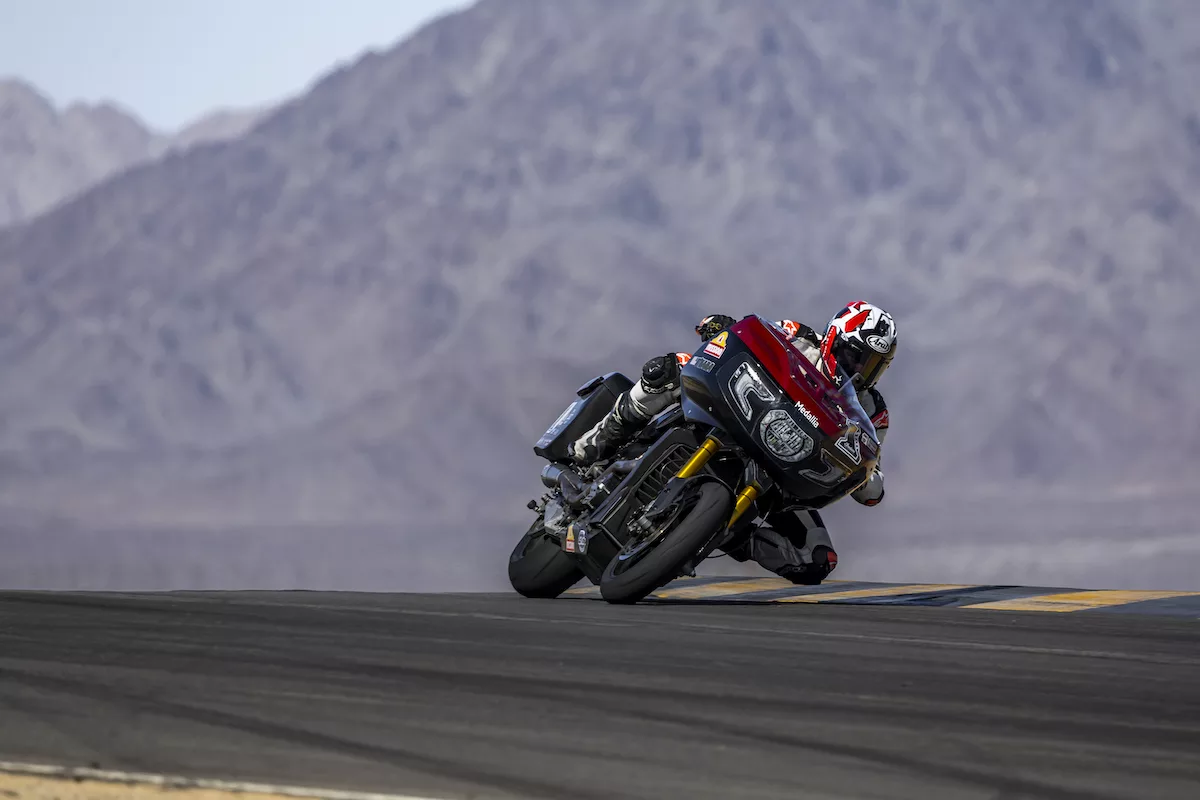
Having experienced the ride in an all but brief time at Chuckwalla makes what Tyler O’Hara, Jeremy McWilliams, Kyle Wyman et al’s performance on America’s racetracks all that more impressive.
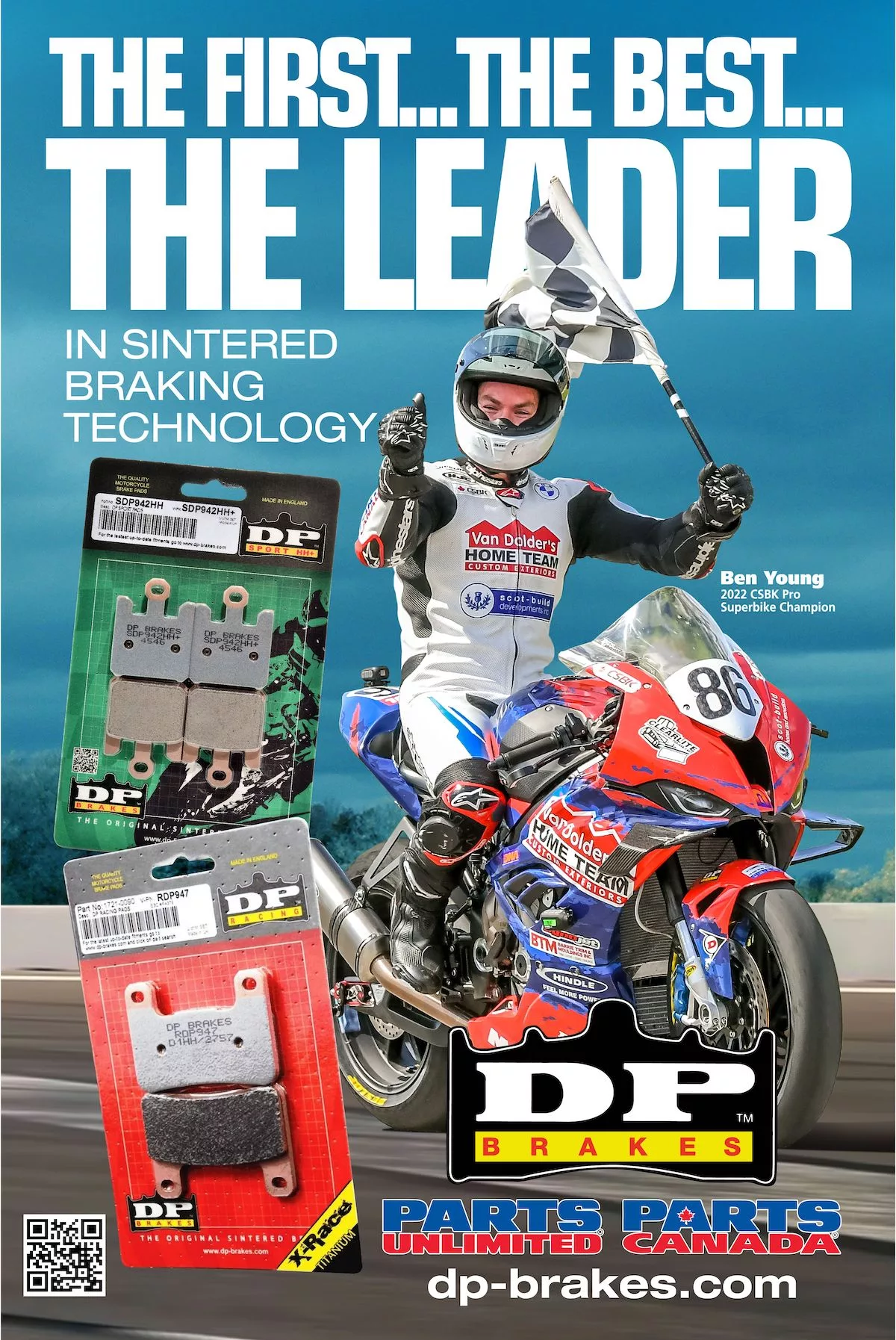
About The Author
Discover more from SportBikes Inc Magazine
Subscribe to get the latest posts sent to your email.
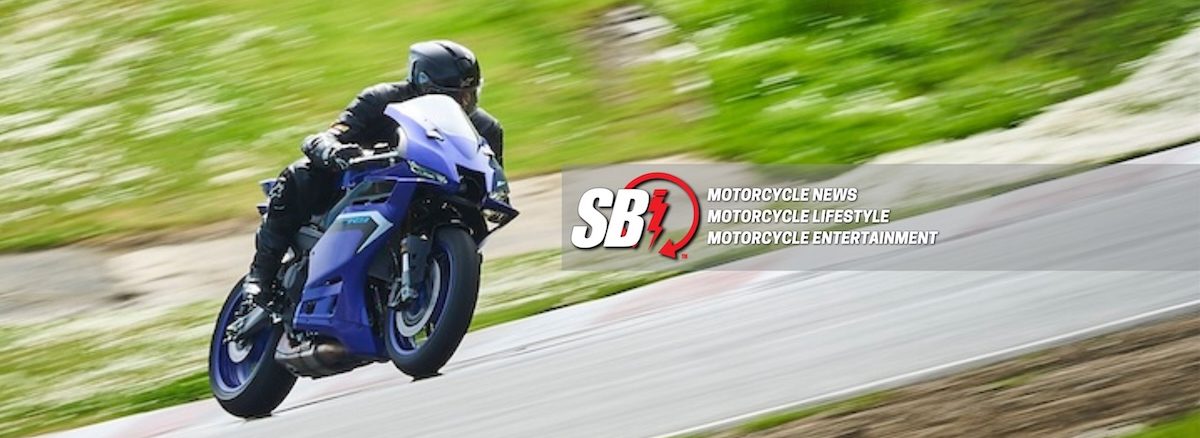

1 thought on “Indian Challenger Racer Test”